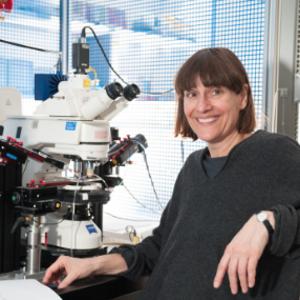Division of Physiological Genomics
We study the nervous system and its development, with the aim of developing new therapeutic approaches to heal brain injuries.
We study the nervous system and its development, with the aim of developing new therapeutic approaches to heal brain injuries.
Our research focuses on the physiology and pathophysiology of the nervous system and its development. We focus on how neurons and glial cells are generated, how synapses—the contact points between neurons—are formed, and how neurons and glial cells interact. Our research aims to uncover the key mechanisms behind neuron formation, with the goal of using this knowledge to develop cell replacement therapies for conditions involving neuronal loss. It is equally crucial to understand the specific roles that different glial cell types play in wound healing and scar formation, to enhance the restoration of normal function.
Our spectrum of methods ranges from classical physiological measurement procedures (e.g. extra- and intracellular electrophysiological measurements, immunohistochemistry and immunocytochemistry) to modern molecular and cell biological techniques (e.g. single cell and spatial sequencing; proteome and interactome analyses) and imaging techniques (e.g. fluorescence lifetime, two-photon and confocal microscopy, optogenetic stimulation and measurement methods) to then manipulate genes in a targeted manner using CRISPR technology and viral vectors. We conduct our research on cells in culture, on brain slices and in vivo. In cell culture, we work with induced pluripotent stem cells, which are differentiated into various cell types or organoids.
By studying the formation of nerve and glial cells during development, we aim to identify strategies to activate these processes in the adult brain following injury and stimulate the generation of new nerve cells in damaged tissue. Our current research focuses on the synaptic integration of newly formed nerve cells into existing neural networks and assessing their potential to functionally restore networks impaired by injury.
More information on the Physiological Genomics website.

© J. Greune / LMU
Biomedical Center
Großhaderner Street 9
82152 Planegg-Martinsried